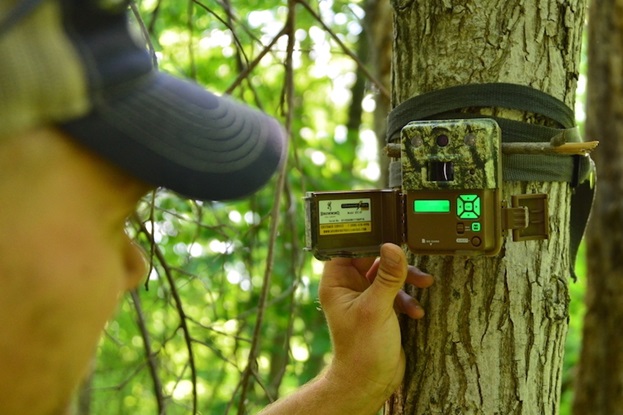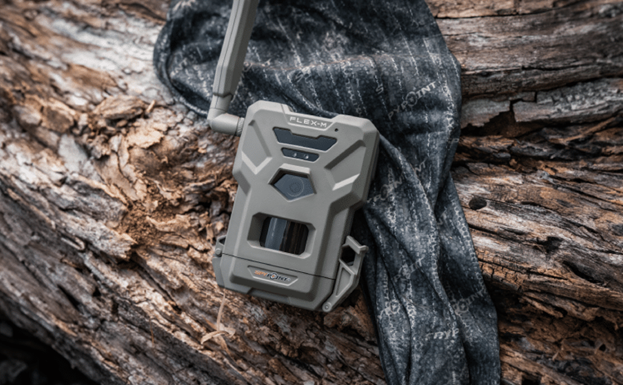Your Secret Weapon in the Woods: A Hunter’s Guide to Game Cameras
If you’ve been hunting for a while, you’ve probably heard fellow hunters talk about their hunting cameras like they’re talking about a new hunting buddy. And the reality is, that’s not too far from reality. Game or trail cameras have revolutionized the game of scouting and hunting, giving hunters eyes in the woods even when they are stuck at the office or home with the family.
What Is a Game Camera?

A trail or game camera is basically a weatherproof digital camera that’s designed to sit out in the forest and take photos or videos automatically when it detects movement. It’s similar to having a security camera outside, except instead of watching package thieves, it’s taking pictures of deer, elk, turkey and whatever else comes wandering by your hunting spot.
They’re tough enough to handle whatever Mother Nature dishes out their way – rain, snow, scorching heat and the occasional curious bear thinking your camera would make a good chew toy. Most top-quality game cameras are battery-operated and can remain outside for weeks or even months, silently capturing all the wildlife activity in your community.
How Do Trail Cameras Work?
The trickery is done through something known as a passive infrared (PIR) sensor. The sensor detects changes in heat signature – when a warm-blooded animal comes into view in front of the camera, it triggers the device and starts recording. The whole process takes a split second, so you never miss a thing.
Most modern hunting game cameras use infrared flash technology at night. Unlike the harsh white flash that would spook all the animals within a mile radius, infrared flash can’t be detected by wildlife. You get clear nighttime images without alerting the local whitetail herd that there’s something watching.
The camera stores all these images and films in an SD card, just like the memory card in your mobile. The newer models can even send pictures from the camera straight to your phone or email through cellular networks, but we’ll get to that later.
Key Features to Look for When Shopping
When you are buying game cameras, the number of options can get overwhelming. Here are the features that truly count:
- The quality of the images is probably the most important thing. Opt for cameras that support at least 12 megapixels for photos and 1080p for video. You’ll want to be able to clearly identify what you’re viewing and make an estimate of the size of that buck’s rack.
- The detection range determines the distance at which the camera can sense motion. The detection range of most good cameras is between 50 and 80 feet. The bigger the detection area, the more motion you’ll pick up, but also the more battery power used.
- Battery life will either make or break your trail camera adventure. No one wants to trudge to their hunting ground every few days to replace batteries. Choose cameras that can last several months on a pack of batteries. Some include solar panel alternatives or external battery packs to allow extended use.
- Recovery time is the rate at which a camera will shoot another photo after being triggered. If you’re observing a heavily used game trail, you’re going to want a camera that will shoot multiple animals or capture several pictures of one animal as it moves through.
Mounting Tips

Mounting your camera properly is a must in achieving well-taken photos. Rule number one: mount it at the right height. For most game, that’s around 3-4 feet off the ground. Too high, and all you’ll end up with are plenty of deer backs and tips of antlers.
Face your camera north when possible to avoid sun glare issues that can wash out your photos. Make sure there’s a clear shooting path – trim back any branches or tall grass that might trigger false photos when the wind blows. Security is a legitimate issue in certain locations.
It is worth using a security box or cable lock to safeguard your investment.
Test out your installation before leaving it unattended. Circulate in front of it from different directions and distances to make sure that the detection zone covers the area you want to monitor.
How Cellular Hunting Trail Cameras Can Up Your Game
This is where it really gets exciting. These cameras are connected to cell phone networks and can send the photo directly to your phone or email in real-time. Imagine getting a shot of a monster buck on your phone during work – you’ll know exactly when and where it’s moving.
This real-time wisdom is a tremendous asset for successful hunting. Instead of checking cameras every week or so, you’re getting live reports on animal activity. You may discover that the big buck only shows up on Tuesday afternoons, or that the doe herd comes through at dawn on calm mornings.
Cellular cameras also save you from making those scouting visits that might disturb your hunting territory. Every time you venture into your site to inspect a traditional camera, you’re leaving scent and potentially scaring animals into changing habits. The downside is the cost on a recurring basis – you’ll be subscribing to a data plan for each of your cameras, but for serious hunters, the live data is worth it.
A Final Word
Hunting cameras are indispensable tools for modern hunters. Whether you opt for a basic model or pay the premium for cellular technology, these electronic spotters will give you insight into wildlife behaviour in a few months that would take years to experience on your own. Set them up right, and they’ll be your top hunting buddy.




